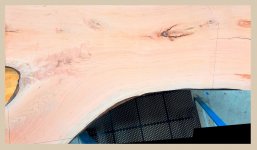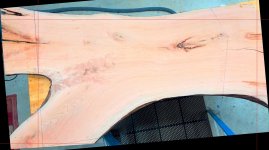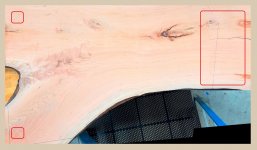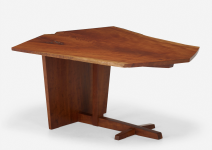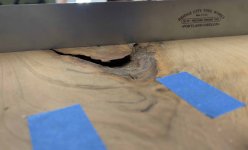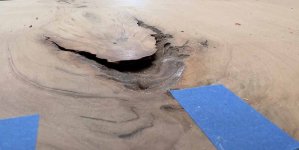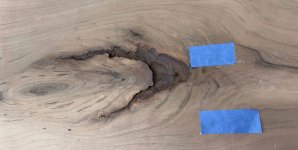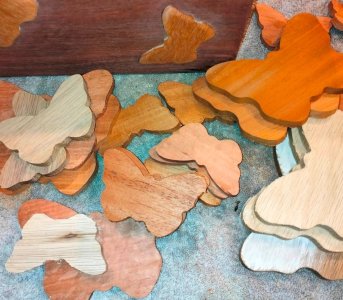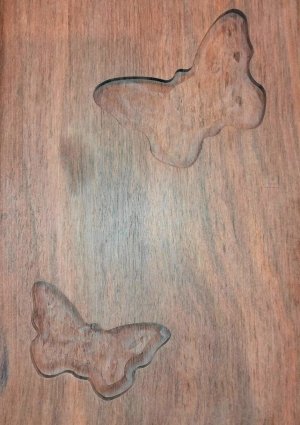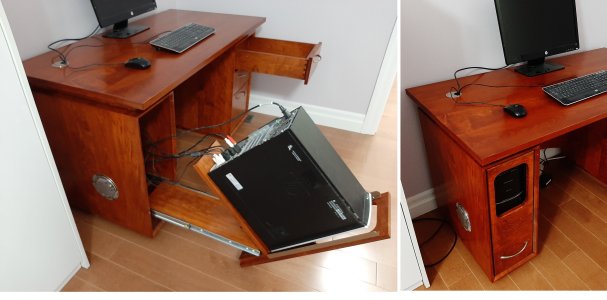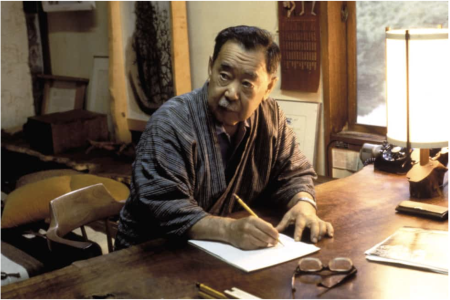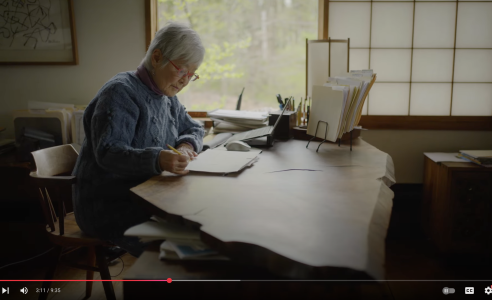luvmytoolz said:
Part of the beauty to me is the thickness of the slab, sets it apart from common commercially made stuff.
I'm concerned about weight. Already thinking I need it separable from the base for moving purposes. My Nakashima furniture is all 4/4 tops, just a bed headboard is thicker, but that's vertical.
With the top separable and not using metal legs, I need to figure out some kind of mechanism for assembling in the room. I could use the DF700 connectors I suppose, especially since the top is so thick. Otherwise, threaded inserts in the bottom of the top, bolted up through the base's horizontal support beams. Still need to design the base, but was thinking copying Nakashima's Minguren desk style with a slab at one side, not all the way at the end though (see pix below).
BTW, I ordered both slabs I posted above, and surprisingly the one I chose to use is the one I almost didn't buy. True, the slabs are now sanded flat so they look different, but it's interesting that even with decent photos in real life I chose differently than from the pictures.
mino said:
Thanks much for taking the time to do this!
Going 6' would be nice, but the space we have really needs something closer to 5'. I've got a 6' desk in there now and it's too big. Where it's going isn't a corner, but has a wall at the left. So having the straight side as we've both drawn at the left works well, and as you point out, the natural split creates a place for the one power cable I have to come up. I think I'm going to leave the free edge on both front and back since the desk sticks out like a peninsula.
Yeah, I'm probably not going to put any chargers or outlets in it, but I am tempted to put a wireless charger underneath at one of the big knots to act as the "locator."
With the wall at the left and the top biggest at the left, the drawer(s) will be at the left. I'm hoping to keep the right end as open as possible, maybe even a partially cantilevered thing. And maybe not the typical drawer stack that supports the desk. But, maybe that way. Or just a drawer or two suspended from the desk and open under.
Borrowing my neighbor's track saw (a Makita) to make the initial cuts. Slept on the marks last night, but still not sure enough to commit.

